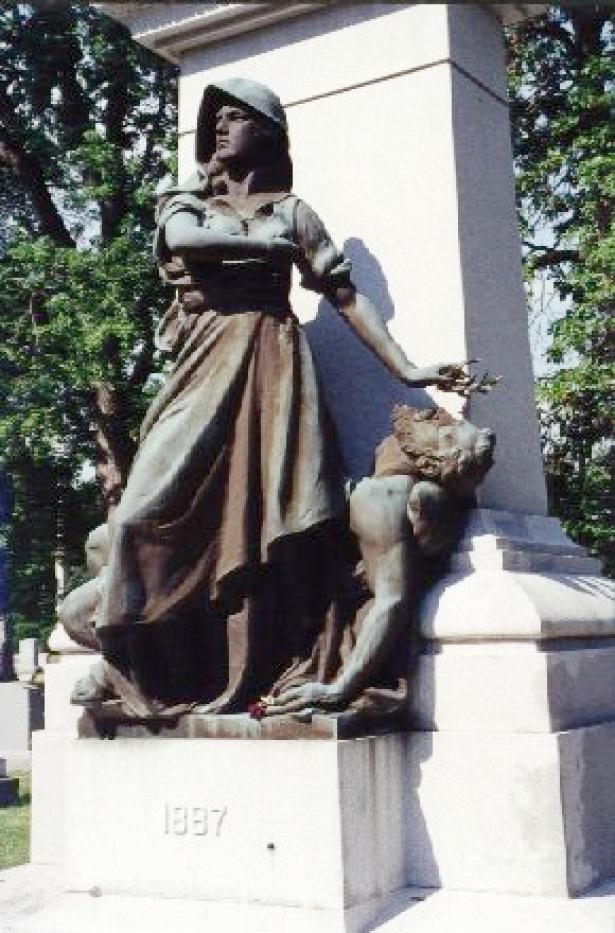|
The Haymarket Martyrs' Monument commemorates workers' struggle to achieve the eight-hour workday and the 1886 rally in Haymarket Square that led to the hanging of four of the fight for workers' rights.
On May 4, 1886 a group of workers gathered in Haymarket Square in Chicago to protest police brutality against strikers at the South Side McCormick Reaper Factory. At the conclusion of the meeting, police marched in and demanded an end to the gathering. An unknown assailant threw a bomb into the crowd, and police shots rang out. Several police officers and protestors were killed or wounded. Police later apprehended eight labor activists, four of whom would be executed.
In Dec. 1887 the Pioneer Aid and Support Association was incorporated with the purpose of "providing for the families of the executed men and of erecting a monument to their memory."
The monument marks the gravesite of the Haymarket martyrs
-- August Spies, Adolph Fischer, Albert Parsons, Louis Lingg, and George Engel. German Waldheim Cemetery, with its nondiscrimination policy, was the only cemetery in the Chicago area that would accept their remains. The dedication ceremony on June 25, 1893 was attended by over 8,000 people. Floral tributes came from unions in England, France and Belgium.
On Feb. 18, 1997 the monument was officially designated a National Historic Landmark.
From: The Smithsonian American Art Museum,
Inventory of American Sculpture
|


Spread the word